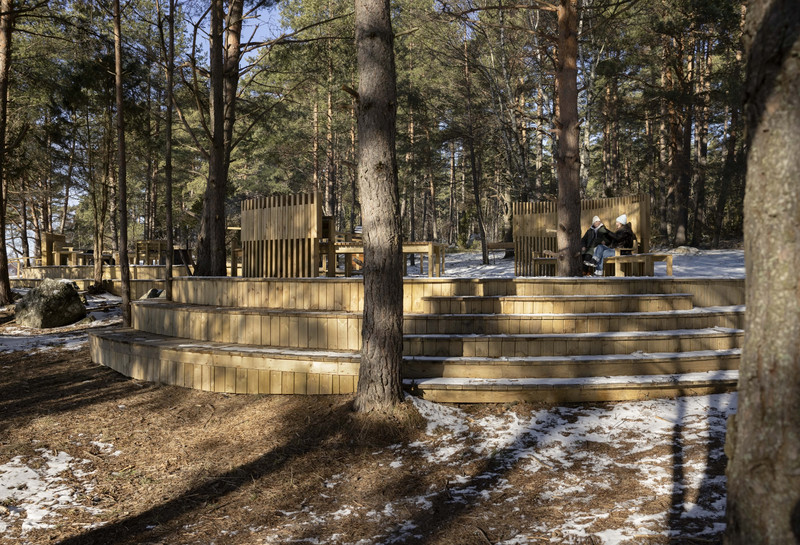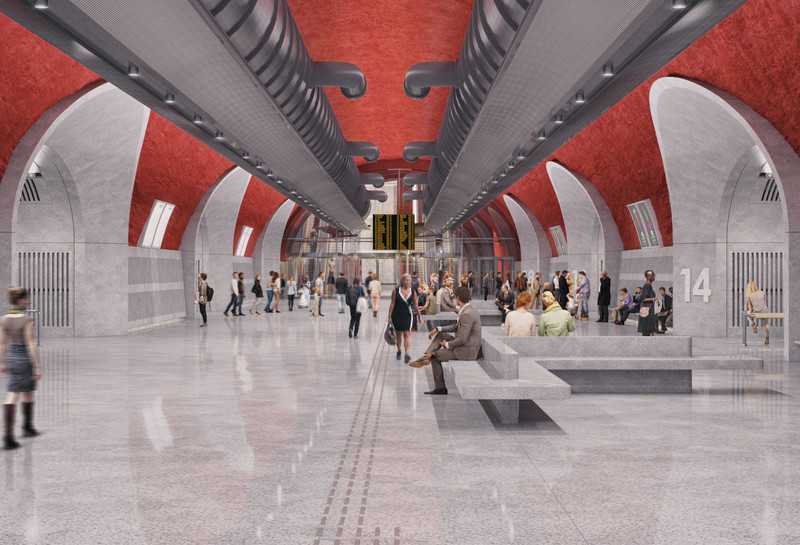
Albydal
Space for life in a circular district
With high ambitions for social and ecological sustainability and mobility, Albydal is currently under development. The area will eventually accommodate 5,600 employees and 400 residents and visitors. Albydal’s plan integrates all aspects of circularity, ranging from preservation and reuse to sustainable mobility and resource-efficient living, across four mixed-use blocks.
The district's design has a varied scale and different functions for everyone throughout the day. 118,500 square meters of attractive offices, well-planned housing, and places for trade, service, restaurant life, culture, exercise, and rest will occur. The area will offer sustainable buildings and outdoor environments for those who live, work or visit the area. A string of meeting places will connect different areas within the district.
In close collaboration with Vasakronan, LINK Arkitektur have developed a framework for a zoning plan for the transformation of Albydal. Today, the area is primarily the site of an office property. With the new subway station Södra Hagalund, the site has a strengthened potential as a destination. The neighbourhood is part of a larger development area that is developing in parallel with the construction of the new subway station and Solnavägen's transformation into a green city street.

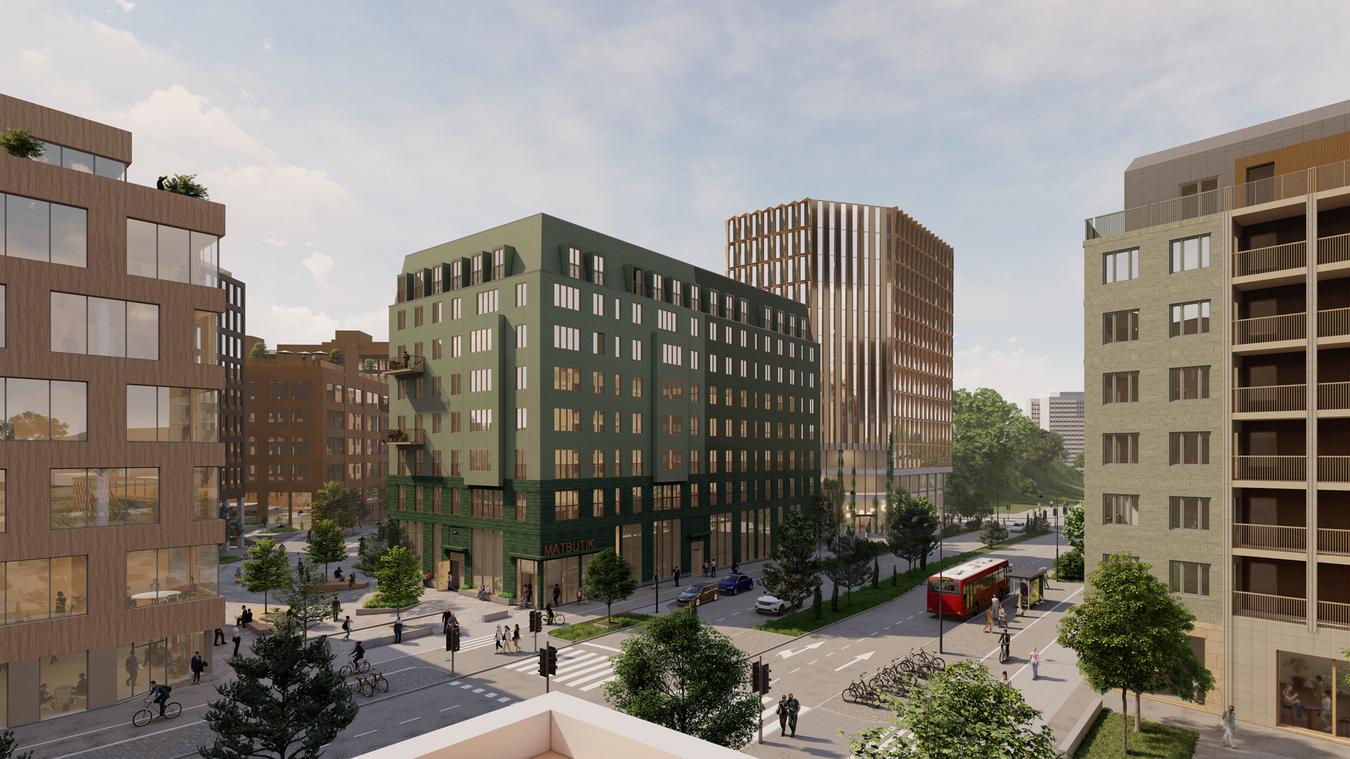
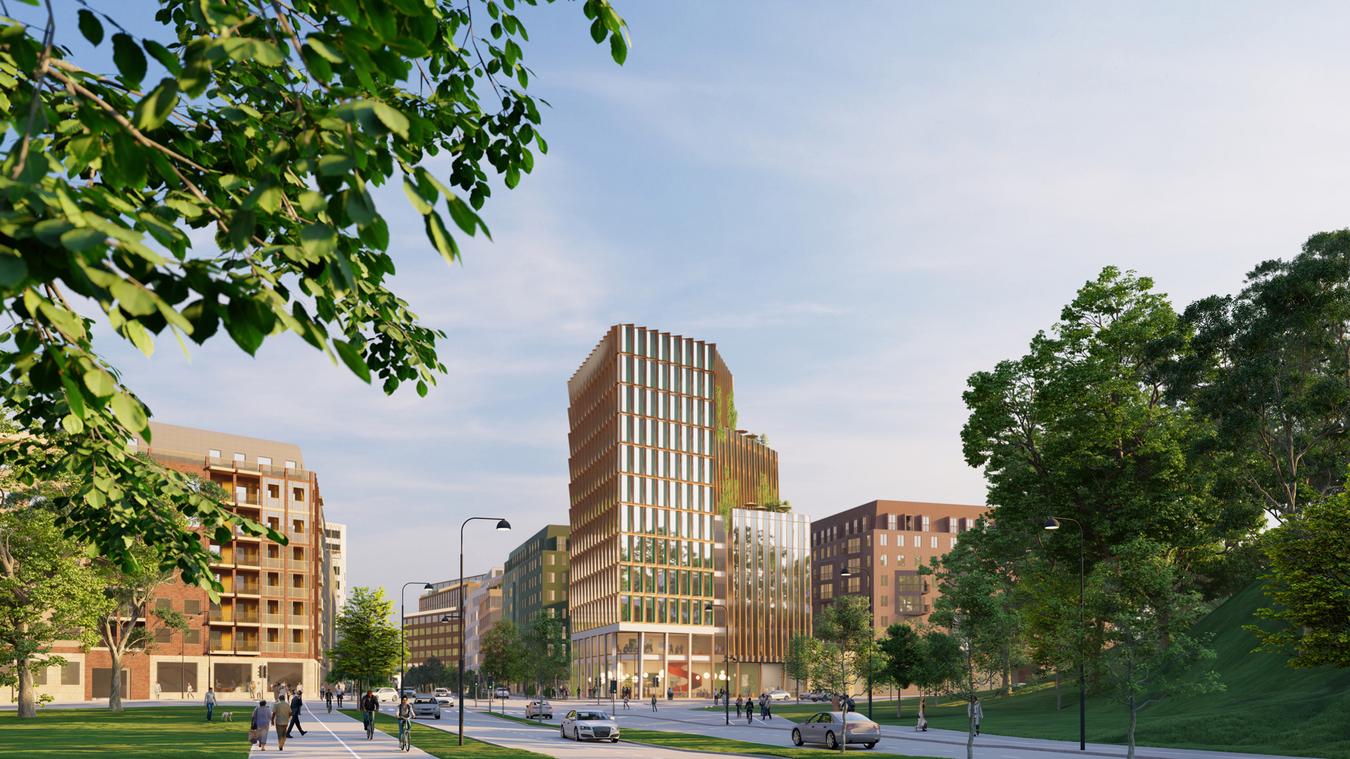
An area rich in experience
Social sustainability, ecology and suitable urban spaces have been central to the design of Albydal, and we have worked very hard to create a lovely place for those who stay here. Through careful design with significant elements of vegetation, the area attracts both play, joy of discovery and rest. We also add a small scale with pedestrian streets and greenery not found along the more prominent streets. You can live and work here, and as a visitor, you can enjoy restaurants, cafes, grocery stores, squares, city streets, and sports or cultural facilities. Branded buildings in the new area are in visual contact with large-scale landmarks throughout northern Stockholm. In this expansive area, Albydal gets its very own identity.
Connectivity, mobility and security
Connectivity measures how well lines connect to each other and to different target points. High connectivity is a quality on a human level: the ability to see each other, have an overview, understand where you are moving, and feel safe. Clear lines of sight, access to daylight, and a good microclimate, among other things, create good conditions for a safe, lively, and lovely place to stay.
It should be easy to move both to and within Albydal, and it is important to accommodate the needs and functions of different road users in the street environment. Main streets surround the area for all types of traffic, and as a complement, we are building new paths for pedestrians and cyclists. It provides good accessibility and safety but also higher experiential values in terms of urbanity and greenery. A green pedestrian street opens into an entrance square, connecting the area with the new subway station.
Service functions are mainly placed at street corners and intersections to contribute to street life. For ground floors that do not house services, we suggest bicycle garages, laundry rooms, etc. A high proportion of glass sections connect the inner life of the houses with the street. Balconies and courtyards also have visual contact with street life. The raised housing estates have premises for parties, cultivation, and meetings.
Climate-focused planning
The goal is a dense and varied district with very high sustainability ambitions. Here, we want to inspire social interaction and a sustainable lifestyle. The proposal takes height for building volumes with low climate impact and the most extended possible life cycle. The area must withstand future changes and long-term climate adaptation, meaning that the plan creates a prerequisite for floor heights for climate-smart wooden frames and a high degree of conversion of the existing office building that stands on the site today.
Choices of material and structure are also made based on opportunities for conversion and reuse. Structurally, we have worked to ensure that double garage floors can be converted into premises if necessary. All block provision, such as loading and garbage disposal, takes place internally to avoid backlogs and be flexible in the face of future logistical innovation solutions. We propose materials with a low climate impact throughout the cycle.
We strengthen the ecosystem services by, among other things, adding a lot of greenery and water as part of life between the houses. For example, you will find lush plantings and visible water for play and experience values, as well as for managing daytime and rainwater and promoting biodiversity. The green square is a car-free and sunny place where the visitor can sit on a bench surrounded by greenery and look out at the water mirror and the passers-by. Here, a caring tree also gets room to spread out, to the delight of both animals and people.
In the project, we managed a large, complex program facilitated by our method of working in the early stages and tools for analyzing 3D models. The beauty of working with parametric tools is that we quickly obtain the information we need, e.g., light and microclimate, good measurements for offices and homes, or good property economic conditions. If we keep track of that information at all times, we can focus on designing the architecture and the locations.
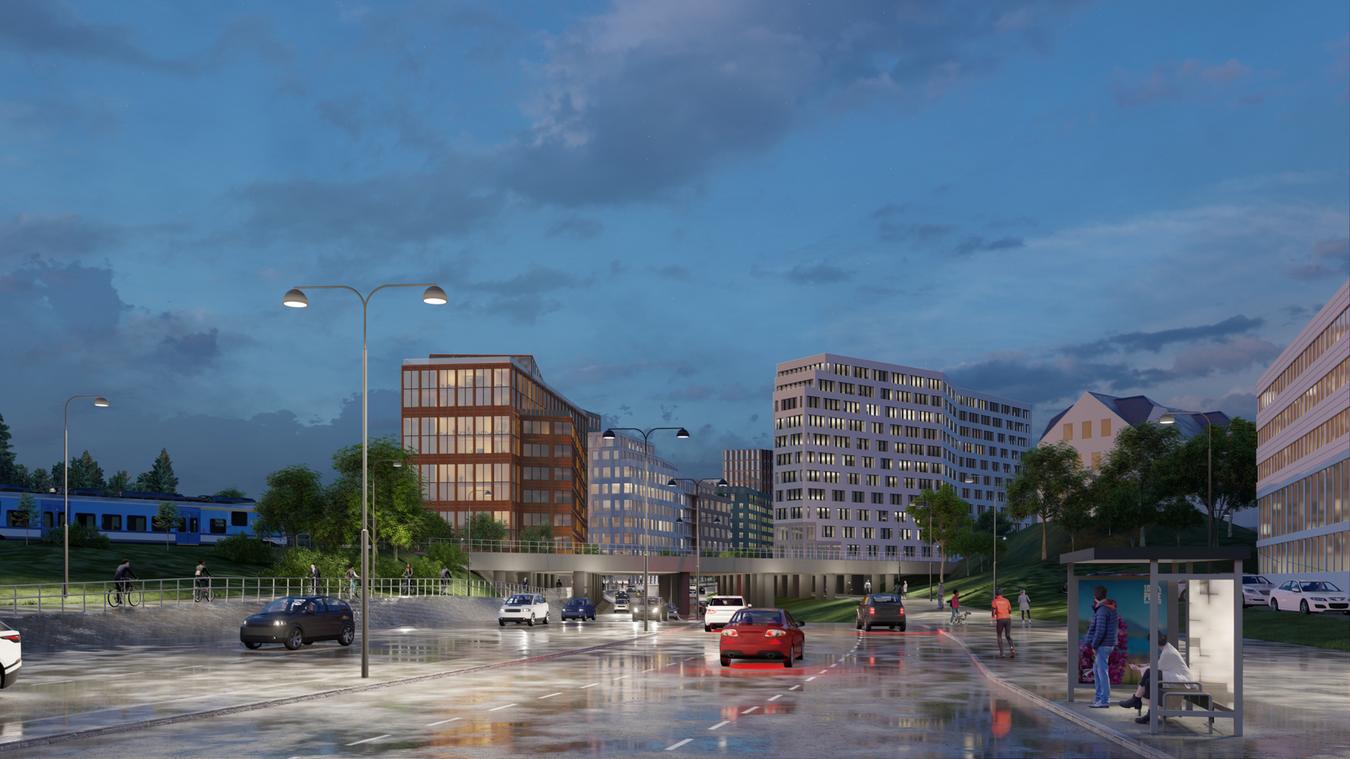
A good collaboration with Vasakronan and the city of Solna has been a prerequisite for developing solutions for an area with the complexity that exists on the site and in the challenges of our time. The subway station will be up and running in 2028, and the area will expand throughout the 2020s and into 2030.
